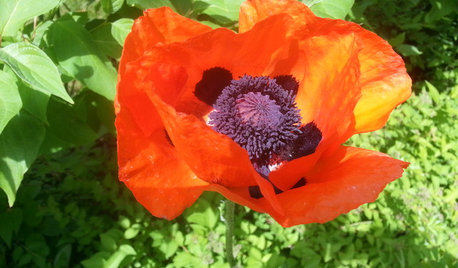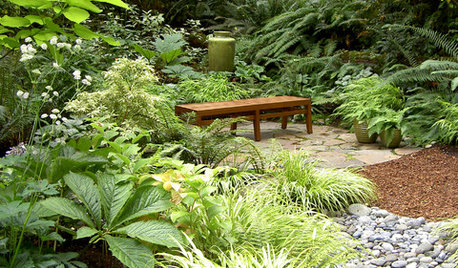What's in YOUR tomato?: soil and foliage amendments
mensplace
14 years ago
Related Stories

GARDENING GUIDESGardening Solutions for Heavy Clay Soils
What’s a gardener to do with soil that’s easily compacted and has poor drainage? Find out here
Full Story
EDIBLE GARDENSSummer Crops: How to Grow Tomatoes
Plant tomato seedlings in spring for one of the best tastes of summer, fresh from your backyard
Full Story
GARDENING GUIDESHouzz TV: Make a Worm Bin for Rich Soil and Happy Plants
A worm-powered compost bin that can fit under a sink turns food scraps into a powerful amendment for your garden. Here’s how to make one
Full Story
GARDENING GUIDESHow to Stop Worrying and Start Loving Clay Soil
Clay has many more benefits than you might imagine
Full Story
LANDSCAPE DESIGNFlood-Tolerant Native Trees for Soggy Soil
Swampy sites, floodplains, even standing water ... if you've got a soggy landscape, these trees are for you
Full Story
GARDENING GUIDES7 New Plants to Grow for Beautiful Foliage
Add color, structure and interest to your garden with these recently introduced plants that sport exceptional foliage
Full Story
GARDENING GUIDESBeautiful Flowers and Foliage From Dedicated Backyard Gardeners
From lawn daisies to topiaries, Houzz users share their backyard beauties
Full Story
GARDENING GUIDESLearn the Secret to Bigger and Better Roses
Grow beautiful roses using both ordinary and unusual soil amendments
Full Story
GARDENING GUIDESGet on a Composting Kick (Hello, Free Fertilizer!)
Quit shelling out for pricey substitutes that aren’t even as good. Here’s how to give your soil the best while lightening your trash load
Full Story
GARDENING GUIDESGreat Garden Combo: 6 Beautiful Plants for a Shady, Wet Site
Transform a shade garden with moisture-loving golden grasses, textural leaves and a sprinkling of flowers
Full StoryMore Discussions






doctrinella
mensplaceOriginal Author
Related Professionals
Port Royal Landscape Architects & Landscape Designers · Ashburn Landscape Contractors · Blue Springs Landscape Contractors · Dudley Landscape Contractors · Haverhill Landscape Contractors · Hendersonville Landscape Contractors · Los Banos Landscape Contractors · University City Landscape Contractors · Binghamton General Contractors · Henderson General Contractors · Pacifica General Contractors · Benton Decks, Patios & Outdoor Enclosures · Hialeah Decks, Patios & Outdoor Enclosures · Palm Beach Gardens Decks, Patios & Outdoor Enclosures · Saint Louis Park Decks, Patios & Outdoor Enclosureslarryw
digdirt2
dickiefickle
mojavebob
mensplaceOriginal Author
digdirt2
nandina
lazy_gardens
airbrush
airbrush
mtbigfigh
mensplaceOriginal Author